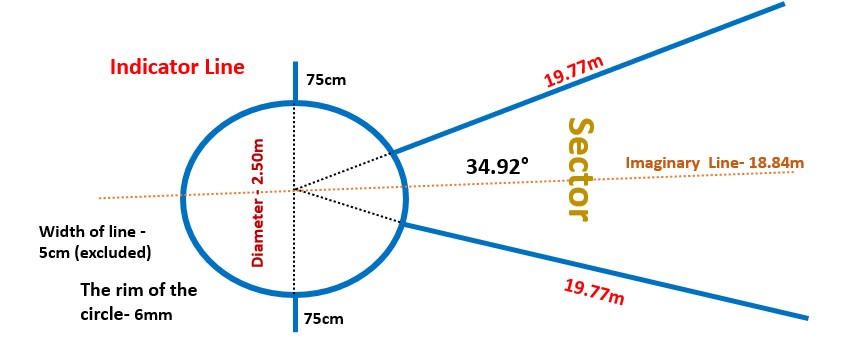Discus Throw: Techniques, Rules, Sector, Equipment, and History
The discus throw is one of the oldest athletic disciplines, with a history dating back to ancient Greece. This sport demands a combination of strength, precision, and technique. Whether you’re a budding athlete or a seasoned competitor, understanding the intricacies of discus throw can help you improve your performance. In this blog post, we’ll delve into the techniques, rules, sector, equipment, and history necessary for mastering the discus throw.
History of Discus Throw
The discus throw has a storied history that dates back to ancient Greece, where it was one of the events in the pentathlon in the ancient Olympic Games. The sport was immortalized in the famous sculpture “Discobolus” by Myron, depicting an athlete in the midst of throwing the discus. In the modern era, discus throw was included in the first modern Olympic Games in 1896 for men and in 1928 for women. Over the years, the techniques and equipment have evolved, but the fundamental essence of the sport remains the same.
Discus Sector and Circle:

Sector-
The sector is a crucial aspect of the discus throw, determining the legal area where the discus must land for the throw to be valid. The key points about the sector include:
- Angle: The sector angle is set at 34.92°. This angle is measured from the center of the throwing circle and extends outward in a V-shape.
- Lines: The sector is marked by two lines that converge at the center of the circle. The discus must land within these lines for the throw to be considered valid.
- Measurement: If the discus lands on or outside the sector lines, it is deemed a foul, and no measurement is taken. Only throws landing within the sector are measured and recorded.
Discus Circle-
The discus circle is the area from which the throw is executed. Here are the key details about the discus circle:
- Diameter: The circle has a diameter of 2.50 meters.
- Rim: The rim of the circle is 6mm thick.
- Width of Line: The line marking the circle’s boundary is 5cm wide but is not included in the circle itself.
- Material: The surface of the circle is typically made of concrete or other non-slip materials to provide a stable platform for the thrower.
- Exit: After the throw, the athlete must exit the circle from the back half to ensure a valid throw.
Equipment for Discus Throw
Understanding the equipment is crucial for both performance and compliance with competition standards.
Discus:
The discus for men typically weighs 2kg with a diameter of 219-221mm. For women, it weighs 1kg with a diameter of 180-182mm. The discus is usually made of wood or other materials, with a metal rim and a circular edge. The thickness and diameter at the metal head vary slightly between men’s and women’s discus.
Discus Cage:
The cage is designed to ensure the safety of athletes and spectators. It must be capable of stopping a 2kg discus moving at 25 meters per second. The cage is U-shaped, with a 6-meter wide mouth and 4 meters in height, positioned 7 meters in front of the throwing circle’s center. The netting is typically made from synthetic fibers or steel wire.
Techniques of Discus Throw
There are two primary techniques used in discus throw: the standing throw and the rotation throw.
Standing Throw:
This technique is typically used by beginners to develop fundamental skills. The athlete stands within the throwing circle, holding the discus at waist height. They swing the discus in a smooth, controlled motion before releasing it into the air. The focus here is on balance and a consistent release.
Rotation Throw:
More advanced throwers use this technique to maximize their throwing distance. The athlete starts at the back of the circle, spins one and a half times, and releases the discus. This technique requires a high level of coordination and timing to execute effectively. The rotational momentum generated in this throw allows for greater distance compared to the standing throw.
Rules of Discus Throw
To ensure fair competition and safety, discus throw follows a set of standardized rules:
- Sector and Circle:
- The discus must land within a 34.92° sector marked on the field.
- The throwing circle has a diameter of 2.50 meters, with a 6mm rim and 5cm width for the line, which is excluded from the circle itself.
- Legal Throws:
- Athletes must stay within the circle until the discus lands.
- Touching the top of the rim or stepping out before the discus hits the ground results in a foul.
- Competitors exit the circle from the back.
- Number of Attempts:
- In events with more than eight athletes, each competitor gets three throws.
- If there are eight or fewer athletes, each gets six attempts.
- The top eight athletes are granted an additional three throws.
- Safety Regulations:
- To prevent injuries, athletes can tape their fingers but cannot use gloves.
- They must use the event’s discus, and warm-ups are only allowed under supervision.
- The use of chalk or adhesive substances on hands is permitted for better grip.
- Measurement and Ties:
- Throws are measured from the inside edge of the circle’s rim to the nearest point where the discus lands.
- In the event of a tie, the second-best throw is considered, followed by the third-best if necessary.
- Timing:
- Each athlete has one minute to complete their throw once their name is called.
Officials in Discus Throw
To maintain order and fairness in competitions, several officials oversee the event:
- Chief Judge: Responsible for overall supervision.
- Measurement Judges: Ensure accurate measurements of each throw.
- Scorer: Records the distances of valid throws.
- Time Judge: Monitors the time each athlete takes to complete their throw.
- Announcer: Communicates the results and other relevant information to the audience.
Conclusion
The discus throw is a demanding but rewarding sport that combines physical prowess with technical skill. By mastering the techniques, adhering to the rules, understanding the sector, and knowing the equipment, athletes can maximize their performance and enjoy the sport to its fullest. Whether you’re just starting or looking to refine your skills, the discus throw offers a unique and exciting challenge that is steeped in tradition and athletic excellence.


This blog stands out among others in this niche. Thank you for breaking down complex concepts so clearly. Your perspective on this topic is refreshing! Your writing style makes this topic very engaging. I can’t wait to implement some of these ideas. Your perspective on this topic is refreshing! Fantastic job covering this topic in such depth! Great read! Looking forward to more posts like this. Thank you for breaking down complex concepts so clearly. I enjoyed reading this and learned something new.